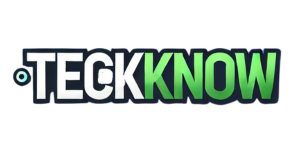JAKARTA, teckknow.com – Software as a Service (SaaS) Solutions have revolutionized the way teams collaborate, automate processes, and scale operations. By shifting from on-premise installations to cloud-hosted applications, organizations can deploy new tools in minutes, minimize IT overhead, and empower users with always-up-to-date features. In this article, I’ll share how SaaS Solutions reshaped my daily routine, highlight common pitfalls, and offer best practices to ensure your SaaS journey is a success.
What Are SaaS Solutions?
SaaS Solutions deliver software over the internet on a subscription basis. Rather than installing and maintaining applications on individual machines, users access tools via a web browser or dedicated client. Core characteristics include:
- Centralized updates and maintenance
- Multi-tenant architecture for cost efficiency
- Usage-based billing and flexible subscription tiers
- Rapid onboarding and minimal infrastructure requirements
Why SaaS Solutions Matter
- Agility and Speed: Deploy new capabilities in hours, not months.
- Cost Predictability: Shift from capital expenditures (CapEx) to operating expenditures (OpEx).
- Scalability: Seamlessly add (or remove) users and features as your needs evolve.
- Continuous Innovation: Benefit from automatic updates, security patches, and new integrations.
Key Benefits of SaaS Solutions
- Lower Total Cost of Ownership
- No hardware procurement or maintenance
- Predictable, tiered pricing models
- Enhanced Collaboration
- Real-time co-editing and shared workspaces
- Centralized dashboards and analytics
- Built-In Security and Compliance
- SOC 2, ISO 27001, GDPR, and other certifications handled by the provider
- Regular backups, disaster recovery, and encryption at rest/in transit
- Ecosystem Integrations
- Pre-built connectors to CRM, ERP, messaging, and DevOps tools
- API-driven workflows for custom automation
Categories of SaaS Solutions to Consider
- Productivity Suites (e.g., Google Workspace, Microsoft 365)
- Project & Task Management (e.g., Asana, Trello, Jira)
- Customer Relationship Management (e.g., Salesforce, HubSpot)
- Accounting & Finance (e.g., QuickBooks Online, Xero)
- Collaboration & Communication (e.g., Slack, Zoom, Miro)
- DevOps & Monitoring (e.g., GitHub, GitLab, Datadog)
My Workflow Transformation—and My Slip-Up
After migrating to a cloud-native project management tool, our team shaved 30% off delivery times by automating task assignments and status reporting. However, I initially overlooked user permissions:
- Slip-Up: Granting “admin” rights to every new user for convenience.
- Consequence: Unintentional deletions, misconfigured integrations, and data fragmentation.
- Lesson Learned: Implement role-based access controls (RBAC) from day one, and audit permissions monthly.
Actionable Tips for Adopting SaaS Solutions
- Conduct a Needs Analysis
- Map existing processes, pain points, and integration requirements
- Prioritize high-impact use cases (e.g., automating invoice approvals)
- Choose the Right Vendor
- Evaluate security certifications, uptime SLAs, and data residency options
- Request demos focusing on your unique workflows
- Plan a Phased Rollout
- Pilot with a small team to gather feedback and refine configurations
- Establish success metrics (e.g., time saved, error reduction)
- Invest in Training and Change Management
- Create bite-sized video tutorials and knowledge-base articles
- Host live Q&A sessions and office hours for early adopters
- Monitor Usage and Optimize
- Leverage built-in analytics to track feature adoption and license utilization
- Decommission redundant tools to reduce overlap and cost
Best Practices for Maximizing SaaS ROI
- Centralize Vendor Management: Maintain a SaaS catalog with renewal dates, user counts, and spend.
- Automate Onboarding & Offboarding: Integrate your identity provider (IdP) for single sign-on (SSO) and automated license provisioning.
- Review Contracts Annually: Negotiate volume discounts and assess whether you need enterprise-grade features.
- Establish a Cloud Center of Excellence (CCoE): Form a cross-functional team to govern SaaS selection, security, and cost optimization.
- Encourage Feedback Loops: Regularly survey users to identify feature gaps and training needs.
Conclusion
Adopting SaaS Solutions unlocks unparalleled agility, collaboration, and cost savings—but only if you plan thoughtfully and govern proactively. Learn from my permission-Misconfiguration slip-up: define clear roles, pilot Incrementally, and continuously measure impact. With the right strategy and team Alignment, SaaS can transform your Workflow, Accelerate innovation, and drive sustainable growth.
Tags: SaaS Solutions, Cloud Computing, Workflow Automation, Productivity Tools, Subscription Software, SaaS Adoption, IT Strategy, Cost Optimization, Security & Compliance, Digital Transformation
Boost Your Proficiency: Learn from Our Expertise on Technology
Don’t Miss Our Latest Article on Privacy Regulations!
